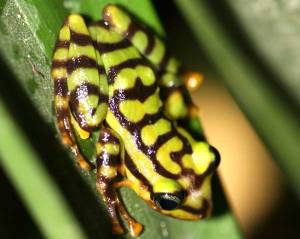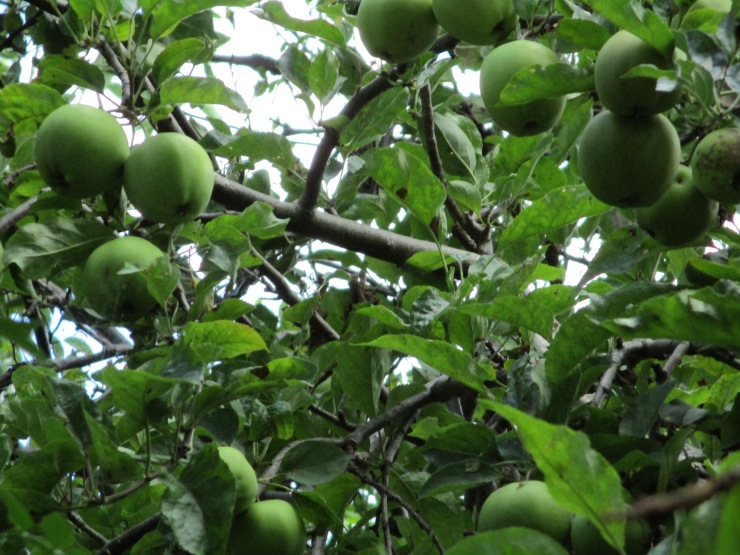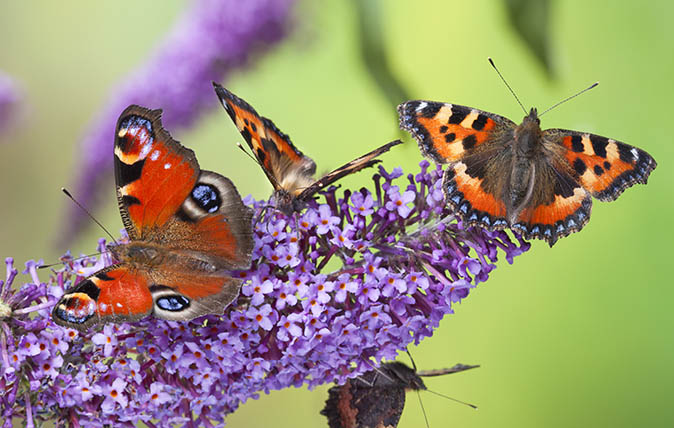
“It is time we all stand together, to be the voice of the voiceless before it’s too late.
Extinction means forever.”
Paul Oxton
Bagatelle No. 25 in A Minor by Beethoven, performed by Lang Lang:
“The most dangerous worldview is the worldview
of those who have not viewed the world.”
Alexander von Humboldt
When I dream of paradise, it begins with my wildlife garden. Since its creation over several years, it has become home to hundreds of creatures. Some are air-bound and feathered, others fly on translucent wings, some spin a yarn and use it as a magic carpet propelled by the wind. Then there are those who live in the friendly soil, others use spaces under stones and bricks.
El Condor Pasa by Leo Rojas:
Today, I will start by writing about those who live in the pond, and during the night and some parts of the day, are busy patrolling their jungle, sorry, I mean garden. They are frogs, and while they are different in colour and size, it is their curiosity, friendliness and beauty that are their most distinguishing features.
Usually, somewhat earlier than this time of year, I have been checking the pond for a clutch or two of tiny black dots surrounded by round jelly forms that are frogs’ eggs. The dots change into tadpoles after the jelly has been eaten. This is the stage of interest to young children who like to see them close up scooped in jam jars, to be released back into the pond after inspection. As my pond is full of vegetation, the metamorphosis of growing tadpoles is quick. Their menu is changing too and becoming less vegetarian to the detriment of other small creatures inhabiting the pond.
The froglets acquire legs and gradually lose their tails, becoming frogs that can breathe air and leave the pond to discover the wild, wide and exciting world around them. They keep the garden free of pests and like to sit quietly by my side when I am planting and supervise my skills. I always talk to them in a companionable manner, as I do with all the creatures that I meet during my gardening time, as it isn’t important whether they understand the words, but the intention is to build trust, and that is always achieved.
How a tadpole transforms into a frog:
Of course, most creatures including frogs have different personalities, just like humans. It is usually noticeable when I happen to be able to help one of them in need. One day, passing by a stack of large terracotta pots, I caught sight out of the corner of my eye that a frog had jumped in but could not get out, and was now panicking and distressed. I freed him and from then on he would come to keep me company while I worked. As the frogs in my garden have different colouring, it wasn’t a problem to know who I am dealing with. Over the summer, this developed into an unusual routine – the frog would follow me into the kitchen (the door being open all day), and often stay some time under the table covered with a long tablecloth before hopping back into the garden. This might have something to do with my inbred hospitality and my habit to treat him to a few titbits.
One evening in early autumn I closed the door to the garden for the night and settled in the adjoining sitting room to read. Suddenly something cold and wet jumped over my arm and onto my lap. It was my friend, the frog. I helped him down and went to open the front door that was closer to the sitting room than the back door to the garden. I have a reasonably large front garden and at that time there was a passage by the side of the house to the back. My frog would have nothing to do with my lazy attempt to avoid going to the back, switching the lights on and so on… He looked at me and stayed put at the doorstep of the sitting room and the hall. His eyes seem to reproachfully admonish me: “This isn’t the right door, and this is not my garden, don’t you know?” There was nothing for it but to close the front door and go to the back. By the time I opened the back door, the frog was already waiting by the table. But instead of hopping out, he sat on the doorstep looking into the dark garden, or perhaps even admiring the new moon. I had to prompt him to depart before being able to lock up for the night and finally get back to my reading. This is one of the countless examples of animals’ ability to reason and communicate with us, if only we could closely observe their world without our set preconceptions. I am always mindful that as we don’t know everything about our own brains, we still don’t understand the complexity of theirs.

A few years ago a new species of frog was discovered in the rainforests of South America. He was called, understandably, the rain frog. The rain frog lives on trees and is sought by geckos and snakes as a tasty snack. What is remarkable is the frog’s ability to hide from predators by changing his skin texture to match his surroundings like the foliage and the bark of the tree he is climbing. He disappears into the leaves mimicking not one colour but several – red, rust, green and brown, all appearing like a palette of multicoloured blobs on his skin. This evolutionary skill makes him invisible. You can almost see the surprise on the faces of his hunters – he was just here, where is he?
In winter months my frogs have many places suitable for hibernation – thick, evergreen bushes, some soft muddy corners and large piles of logs in the stumpery. Long may they reign in my wildlife kingdom of beautiful frogs.
Hilaire Belloc wrote a poem about frogs; here is a short extract:
‘No animal will more repay
A treatment kind and fair,
At least so lonely people say
Who keep a frog (and by the way,
They are extremely rare).’





There is one very apt Garfield observation: when looking at the garden in his favourite fudgel position, he exclaims: ‘Wow… Look at the grass grow’, then concludes with feeling: ‘I love action.’ How right he is! There is so much to see in a garden by just stopping here or there and looking closely around. This is how I have discovered that the ants, living under the top bricks of the low wall that I have constructed like a dry-stone wall, are capable of climbing to the top of the 8-foot-high apple trees to get to aphids to eat/milk them. It is an achievement similar to humans being able to climb Ben Nevis in a few minutes and going back to and fro all day.
To watch a reddish army of ants streaming up and down the tree is an impressive sight. I planted several trees in my garden, many fruit-bearing ones, and they are cleared out of any pests by the birds. Apart from relying on my helpers, the garden is wholly organic. I haven’t used any chemicals and everything is flourishing.



Amazing ant antics (courtesy of Woodlands TV):
Insects are at the bottom of the food chain, and everyone depends on them. Without them, there would be no pollination and no fruits or vegetables or crops. Our gardens are the biggest in the country’s nature reserve, and it is important that they are friendly to our garden wildlife. ‘Insects are vital for the health of all creatures, including humans.’ says biodiversity expert Dr Sam Cartwright.
The toe-tapping “Ugly Bug Ball” from the film “Summer Magic”:
My early morning inspection of the rose bushes for aphids tells me that the tenants of the few insect hotels I have installed in the garden are already up and working diligently removing the pests. They are as beautiful as they are hard-working, always elegantly attired in shiny red coats with symmetrical seven black dots – ladybirds. The nation’s biggest wildlife winner – ladybird sightings increased by almost a quarter (22%) on the previous survey.



Ladybirds taking off in slow motion:
A few more feet into the garden and the multitude of small birds that I feed all year round are busy high up clearing the fruit trees of any unwelcome visitors. The birds appreciate my help especially during winter and the fledgling season as they save energy by food being ready and waiting. This is crucial if spring is cold and when it rains as fledglings will never die of hunger in my garden. Their gratitude is palpable, and no, I am not hallucinating or ‘humanising’ the little blighters. I can only repeat again that we now only know one thing for sure where animal intelligence is concerned, that we have still a lot to learn.
 The abundance of fruits and flowers in my garden is entirely due to another, this time winged, army of bumblebees, solitary bees, and wasps. They start with the first pale rays of early spring, ecstatic at the abundance of highly scented winter and spring-flowering bushes. The queen bumblebee traditionally hibernates in my kitchen, behind the dresser. The solitary bees like my supply of rose bushes because they cut circles from the rose leaves to make their nests. The wasps are also welcome here, and when necessary – end of summer or bad weather – I put a saucer of sugar in a place known to them. This is greatly appreciated and when the sugar is gone (with the ants’ participation), one wasp will fly into the kitchen through the open door and loudly buzz around me, thus signalling the need for replenishment. It happens every year without fail when the sugar is gone and I have never been stung by the wasps. As I am sane, not sentimental and with a passion for sciences, I hope that readers will take note. Please don’t kill wasps. They are very good at pollinating.
The abundance of fruits and flowers in my garden is entirely due to another, this time winged, army of bumblebees, solitary bees, and wasps. They start with the first pale rays of early spring, ecstatic at the abundance of highly scented winter and spring-flowering bushes. The queen bumblebee traditionally hibernates in my kitchen, behind the dresser. The solitary bees like my supply of rose bushes because they cut circles from the rose leaves to make their nests. The wasps are also welcome here, and when necessary – end of summer or bad weather – I put a saucer of sugar in a place known to them. This is greatly appreciated and when the sugar is gone (with the ants’ participation), one wasp will fly into the kitchen through the open door and loudly buzz around me, thus signalling the need for replenishment. It happens every year without fail when the sugar is gone and I have never been stung by the wasps. As I am sane, not sentimental and with a passion for sciences, I hope that readers will take note. Please don’t kill wasps. They are very good at pollinating.
The beauty of pollination (from a Louis Schwartzberg TED talk, courtesy of Mahmut Demir):


Last year I had masses of butterflies, including large whites, small whites, tortoiseshells, and peacocks. Small white butterflies sightings in British gardens last year dropped significantly compared to the previous June, the biggest decline (13%) of any creature. There are many simple and easy actions that will make a real difference to our garden, even more, to be beautiful and enjoyable. The results of the survey show that people with the most different features in their gardens have the most wildlife. Trees, hedges, long grass, wildflowers, ponds, decaying wood, piles of leaves – there are lots of ways to support wildlife but variety is very important.

A dance On Butterfly Wings accompanied by Hymne à la vie by Michel Pépé (courtesy of Ine RP Braat):
On a small island, we are building everywhere, including at the back of large gardens. We concrete our front gardens, once admired by foreign visitors, now turned into car parking spaces, and ‘decorated’ by several rubbish bins. We are planning to build more towns in any space between the existing towns. One day we will realise that we cannot eat cement or even money, however good our industry is, and I don’t dare to think what will happen to our wellbeing and our mental health. Humans need nature to survive.
As a reminder of the exhortation of Paul Oxton, We All Stand Together by Paul McCartney and The Frog Chorus (courtesy of Ine RP Braat):

Such a lovely and informative post, thank you Joanna for sharing your beautiful garden with us!
LikeLike
Thank you, Henrietta, for your kind, as always, comment.
Joanna
LikeLiked by 1 person
Thank you again. Greatly appreciated.
Joanna
LikeLiked by 1 person
You DO have a beautiful kingdom with some wonderful inhabitants. Friendship between humans and frogs must be very rare and you’re lucky to have that. The pictures were all stunning, so were the musical pieces. The good old insects! Who would have known we depended on them so much?
Such a beautiful post, full of knowledge and warmth. Thank you for sharing! 😊 May your royal subjects inhabit your kingdom for many many years to come!
LikeLike
Thank you, SamSahana, for your wonderful comments!! The friendship of humans and wildlife depend on our friendly and helpful involvement.
I had and have many friends in my garden, and I will write more about them.
Joanna
LikeLiked by 1 person